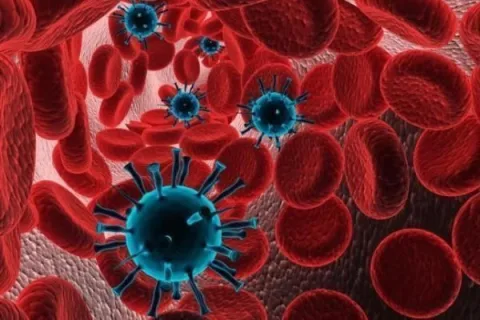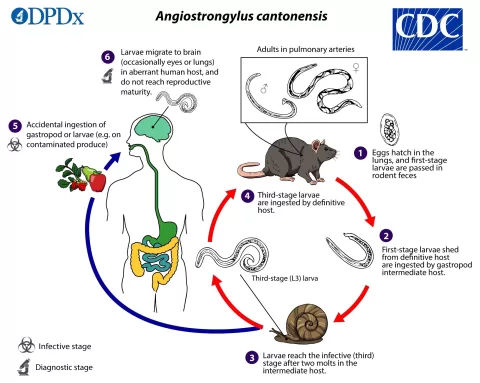In 2024, the emergence of a Shigella sonnei outbreak in the San Francisco Bay area has raised significant public health concerns. This multidrug-resistant bacteria poses a serious threat, particularly in vulnerable communities where hygiene practices may be inadequate. Utilizing advanced genomic modeling techniques, researchers aim to trace the outbreak’s origins and transmission patterns, revealing critical insights through phylodynamics. As the investigation unfolds, the collaboration between public health authorities and genomic sequencing services is essential to mitigate the spread of this infection. Understanding the dynamics of this Shigella outbreak is vital for implementing effective prevention strategies.
The recent surge of Shigella sonnei infections, commonly known in association with outbreaks of gastrointestinal illness, has prompted a rigorous examination in California’s San Francisco Bay area. This plateau in infection rates highlights the urgent need for public health interventions against resistant strains of the bacteria, which are known to complicate treatment responses. Employing advanced genomic techniques enables health officials to analyze infection clusters and their patterns with precision, shedding light on the origins of these outbreaks. Furthermore, ongoing surveillance is crucial in tracking the evolution of these pathogens, particularly considering the increase in cases linked to containment measures related to social welfare facilities and crowded living conditions. As we delve deeper into the implications of this outbreak, it is clear that integrating research with public health strategies will be fundamental to safeguarding community health.
Understanding Shigella sonnei Outbreak Dynamics
The outbreak of Shigella sonnei in during early 2024, particularly in the San Francisco Bay area, underscores the necessity for robust surveillance systems in public health. Genomic modeling has emerged as a critical tool in elucidating the dynamics of such outbreaks. By employing phylodynamics to track the genetic variations of Shigella sonnei, researchers can identify transmission pathways and assess the virulence of different isolates. This allows health officials to better target interventions and contain the spread of the pathogen.
Furthermore, understanding the dynamics of the Shigella sonnei outbreak is not solely about identifying the source; it pertains to understanding how multidrug-resistant bacteria evolve within certain populations. With genomic data, public health officials can pinpoint how resistance genes propagate among strains, particularly in vulnerable communities with limited access to healthcare. This highlights the urgent need for integrated public health responses that utilize real-time genomic data to mitigate outbreaks.
The Role of Genomic Sequencing in Public Health
Genomic sequencing plays a pivotal role in modern public health by providing precise data that can influence intervention strategies. In the recent Shigella sonnei outbreak, whole-genome sequencing enabled researchers to uncover the epidemiological links between cases. By analyzing the genetic makeup of the isolates, scientists determined that these closely related strains indicated a single introduction into the San Francisco Bay area, which is crucial information for containing future outbreaks.
Moreover, genomic sequencing enhances the ability of public health departments to track and respond to the emergence of multidrug-resistant bacterial strains. It equips health officials with insights into the transmission dynamics within different settings, such as the board and care facilities involved in this outbreak. These insights are vital for the timely implementation of public health measures, ensuring that communities, especially those at higher risk, are adequately protected.
Phylodynamics: A Tool for Interpreting Outbreak Trends
Phylodynamics, the intersection of phylogenetics and epidemiology, offers valuable insights into the evolutionary dynamics of pathogens during outbreaks. In the context of the Shigella sonnei outbreak reported in California, this approach helped public health officials comprehend how the pathogen spread through interconnected community settings. By tracing the genetic changes in the Shigella isolates, researchers were able to inform public health authorities about potential routes of transmission and risk factors associated with the outbreak.
Utilizing phylodynamics also aids in predicting the potential for future outbreaks and the emergence of antibiotic resistance. As seen in the multidrug-resistant strains of Shigella sonnei, the genomic data reveal patterns that could foreshadow potential public health crises. Emphasizing the need for ongoing surveillance is critical to preemptively address these risks before they escalate.
Multidrug Resistance and Public Health Challenges
The emergence of multidrug-resistant Shigella sonnei poses significant challenges for public health authorities. As the 2024 outbreak demonstrated, the detection of Shigella bacteremia in confirmed cases points to the urgent necessity of rapid diagnostic and treatment options. Multidrug resistance complicates management strategies and can lead to increased morbidity in affected populations, particularly in settings such as independent living centers and care facilities.
Addressing the threat of multidrug-resistant bacteria requires a comprehensive public health response that includes enhanced sanitation measures, community education, and improved healthcare access for at-risk populations. Collaboration between public health sectors and laboratory services is essential to implement effective measures that stay ahead of the evolving resistance patterns observed in Shigella sonnei.
Importance of Hygiene in Combatting Shigella Infections
The San Francisco Bay area Shigella sonnei outbreak highlights the critical importance of maintaining proper hygiene and sanitation in facilities frequented by vulnerable populations. Poor hygiene practices significantly contribute to the transmission of Shigella infections, especially among individuals experiencing homelessness and those in close living conditions. Public health campaigns focused on promoting handwashing, safe food preparation, and sanitation can help mitigate the risk of outbreaks.
Additionally, public health initiatives that foster community engagement can empower individuals to adopt better hygiene practices. Educational programs tailored to the needs of specific populations, such as residents of board and care facilities, can ensure that messages about the importance of sanitation are well-received and practiced, ultimately reducing the incidence of Shigella sonnei infections.
Collaboration Between Public Health and Laboratory Services
The integration of public health efforts with laboratory services is vital for effectively managing outbreaks like that of Shigella sonnei. By leveraging genomic sequencing capabilities, public health departments can rapidly identify outbreak sources and patterns of transmission. The collaboration ensures that laboratory findings inform real-time public health responses, allowing authorities to implement targeted strategies that can effectively contain outbreaks before they spread widely.
Moreover, fostering strong partnerships between local health departments and clinical laboratories can facilitate the sharing of crucial data regarding pathogen resistance and epidemiological trends. This collaboration is particularly important in regions like the San Francisco Bay area, where diverse populations may experience varying degrees of risk, thus requiring tailored public health strategies.
Impact of Outbreak Investigations on Community Health
Outbreak investigations, such as the one involving Shigella sonnei in California, have wide-ranging implications on community health. Through systematic case investigations, public health officials are able to identify and address underlying risk factors contributing to the spread of disease. In the case of Shigella sonnei, understanding the social determinants of health that affect vulnerable communities is essential for tailoring effective interventions.
Furthermore, the findings from outbreak investigations can also guide policy decisions and resource allocation. Identifying critical areas such as sanitation and healthcare access where improvements are needed can lead to targeted funding and programs aimed at strengthening community resilience against future outbreaks and enhancing overall public health infrastructure.
Lessons Learned from the Shigella sonnei Outbreak
The Shigella sonnei outbreak provides essential lessons that can inform future public health strategies. One of the key takeaways is the necessity for rapid response systems that utilize genomic epidemiology to trace and control outbreaks efficiently. With the ability to quickly sequence genomes, health authorities can gather data that informs action, allowing for tailored interventions to protect at-risk communities effectively.
Additionally, the outbreak underlines the importance of investing in sanitation and hygiene education, particularly in areas with high-risk populations. Public health campaigns should be designed not only to raise awareness about Shigella transmission but also to empower communities with practical tools and knowledge to minimize their risk. Learning from such outbreaks can significantly shape the approach to combating foodborne and waterborne illnesses in the future.
Future Directions for Shigella Research and Control
As the threat of Shigella sonnei and other multidrug-resistant pathogens continues to rise, future research must focus on innovative strategies for control and prevention. Enhanced genomic surveillance techniques will be imperative for monitoring changes in resistance patterns and understanding the evolving nature of outbreaks. Public health authorities should prioritize funding and resources to support this research trajectory, ensuring that they can respond effectively to future health crises.
Moreover, interdisciplinary collaboration will be critical in devising comprehensive solutions that encompass not just clinical aspects, but also social, environmental, and economic factors that contribute to outbreaks. Engaging diverse stakeholders—from researchers to community leaders—can foster a holistic approach to Shigella control that not only addresses immediate health concerns but also improves broader public health outcomes in vulnerable communities.
Frequently Asked Questions
What is the significance of the Shigella sonnei outbreak in the San Francisco Bay area?
The Shigella sonnei outbreak in the San Francisco Bay area is significant due to its association with cases of multidrug-resistant bacteria. The outbreak was identified in board and care facilities and independent living centers, highlighting a public health concern due to the vulnerability of the affected population. Genomic modeling and sequencing were utilized to track the outbreak, allowing public health officials to understand transmission patterns and develop effective responses.
How does genomic modeling contribute to the understanding of the Shigella sonnei outbreak?
Genomic modeling plays a critical role in understanding the Shigella sonnei outbreak by providing insights into the genetic similarities of bacterial strains involved. In this outbreak, whole-genome sequencing revealed that isolates were genotypically identical, indicating a probable single introduction event. This method enhances phylodynamics analysis, assisting public health departments in tracing transmission pathways and identifying the source of infections.
Why are multidrug-resistant Shigella sonnei strains a public health concern?
Multidrug-resistant Shigella sonnei strains pose a significant public health concern because they can lead to severe infections that are difficult to treat. The outbreak in the San Francisco Bay area underscored the risks associated with these resistant strains, particularly in communal living environments where hygiene is crucial. Effective surveillance and rapid public health interventions are essential to prevent further spread and protect vulnerable populations.
What role does phylodynamics play in outbreaks of Shigella sonnei?
Phylodynamics plays an essential role in outbreaks of Shigella sonnei by allowing researchers and public health officials to understand the evolutionary relationships between bacterial strains over time. By analyzing genomic data, authorities can visualize transmission dynamics and identify potential factors driving the outbreak. This information is vital for implementing targeted public health measures and controlling the spread of infection.
What preventive measures are recommended for managing the Shigella sonnei outbreak?
To manage the Shigella sonnei outbreak, public health authorities recommend stringent hygiene and sanitation practices in facilities, especially in those serving vulnerable populations. This includes regular cleaning and disinfecting of common areas, promoting handwashing, and safe food handling practices. Collaboration between public health and laboratory services is also crucial to facilitate rapid response and containment of the outbreak.
How did the Shigella sonnei outbreak affect vulnerable communities in the San Francisco Bay area?
The Shigella sonnei outbreak has significantly impacted vulnerable communities in the San Francisco Bay area, particularly those in boarding facilities or experiencing homelessness. These populations are often more susceptible to infections due to limited access to healthcare and sanitation resources. The outbreak highlighted the pressing need for public health initiatives focused on improving hygiene and healthcare access in these communities.
What implications does the Shigella sonnei outbreak have for future public health responses?
The implications of the Shigella sonnei outbreak for future public health responses include the increasing necessity of genomic epidemiology in outbreak investigations. The use of genomic sequencing can provide critical insights into bacterial transmission patterns, allowing for timely and informed decision-making. This approach underscores the importance of integrating laboratory capabilities with public health strategies to enhance the effectiveness of outbreak control efforts.
| Key Point | Details |
|---|---|
| Outbreak Detection | A Shigella sonnei outbreak was detected in the San Francisco Bay area in January 2024. |
| Affected Locations | Cases reported in a board and care facility and an independent living center. |
| Genomic Sequencing | 19 genotypically identical isolates indicated a potential common source. |
| Epidemiological Link | Whole-genome sequencing showed a high degree of similarity among isolates. |
| Public Health Implications | Highlights the importance of genomic epidemiology in outbreak response. |
| Prevention Strategies | Emphasizes the need for hygiene and sanitation in public facilities. |
Summary
The Shigella sonnei outbreak in California represents a critical public health challenge, highlighting the need for advanced genomic epidemiology to manage bacterial infections. By analyzing outbreak data through genomic sequencing methods, public health authorities can better track and respond to similar threats in community settings. The results underscore the vital importance of hygiene efforts in vulnerable populations to prevent the spread of infections.
The content provided on this blog (e.g., symptom descriptions, health tips, or general advice) is for informational purposes only and is not a substitute for professional medical advice, diagnosis, or treatment. Always seek the guidance of your physician or other qualified healthcare provider with any questions you may have regarding a medical condition. Never disregard professional medical advice or delay seeking it because of something you have read on this website. If you believe you may have a medical emergency, call your doctor or emergency services immediately. Reliance on any information provided by this blog is solely at your own risk.








